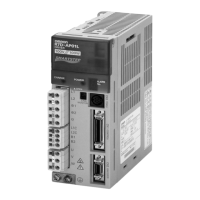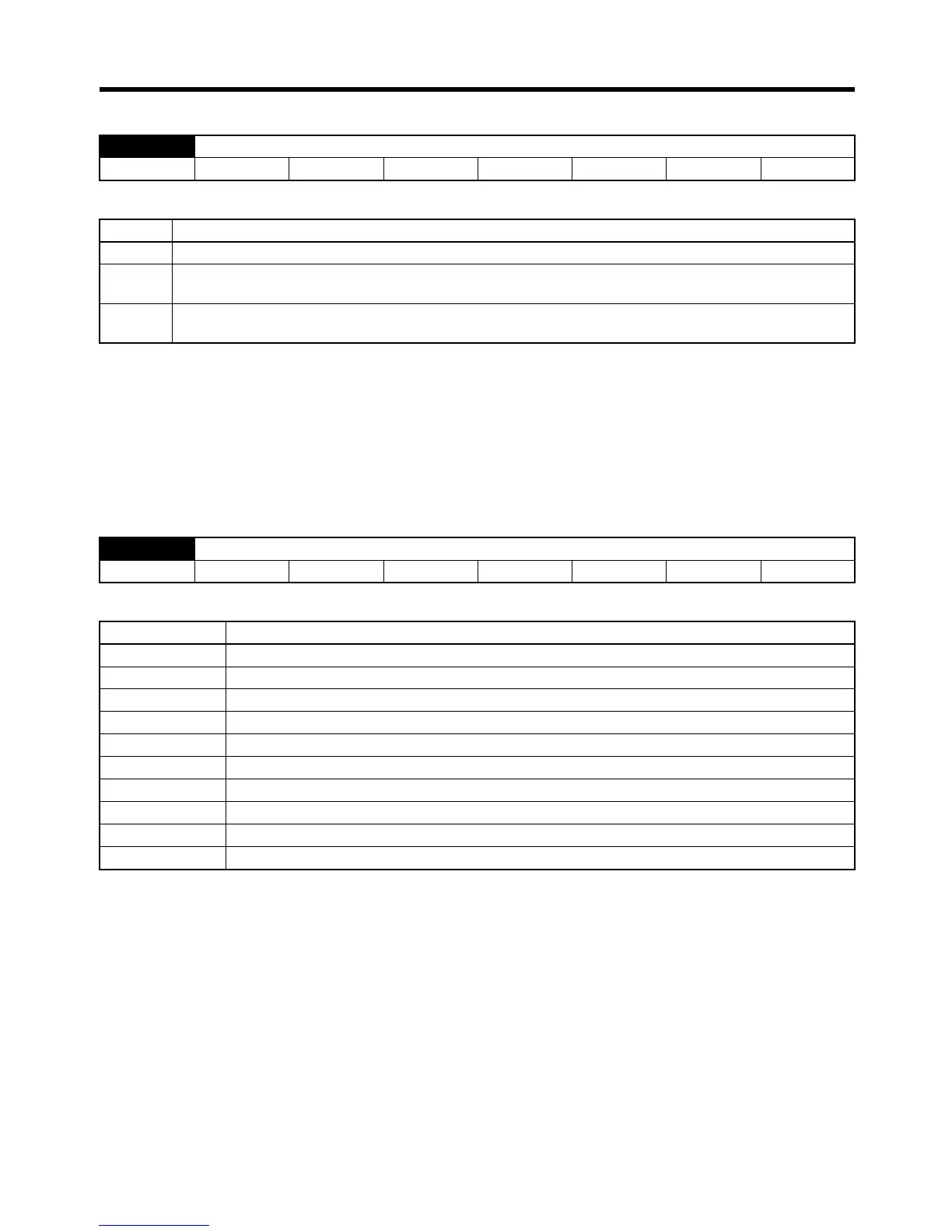Chapter 4
4-21
Operation
Setting Explanation
• When calculating load inertia using online autotuning, set whether the effects of adhesive friction
(load torque proportional to rotation speed) on the servo system should be considered.
• If adhesive friction is to be considered, set whether the adhesive friction is large or small to improve
the accuracy of the load inertia calculations.
Note If the adhesive friction on the rated rotation speed is 10% max. of the rated torque, set this
parameter to 0 (no friction compensation).
Setting Explanation
• If using position control, select the command pulse mode to suit the Host Controller’s command
pulse format.
• If inputting 90
° phase difference signals, select either ×1, ×2, or ×4. If you select ×4, the input pulse
will be multiplied by 4, so the number of Servomotor rotations (speed and angle) will be four times
that of the
×1 selection.
Note If function switch 6 is OFF to enable the function switch settings, this parameter is ignored and
the setting on function switch 3 (command pulse input setting) is used.
Pn110.2 Online autotuning function – Adhesive friction compensation selection
Settings 0 to 2 Unit --- Default 0 Restart? ---
Setting Explanation
0
No friction compensation (when adhesive friction for rated revolutions is 10% max. of rated torque)
1
Small ratio between friction compensation and rated torque (when adhesive friction for rated rota-
tion speed is 10% to 30% of rated torque)
2
Large ratio between friction compensation and rated torque (when adhesive friction for rated rota-
tion speed is 30% to 50% of rated torque)
Pn200 Position control setting 1 –- Command Pulse Mode (Position)
Settings 0 to 9 Unit --- Default 1 Restart? Ye s
Setting Explanation
0 Feed pulse/forward signal, positive logic
1 Forward pulse/reverse pulse, positive logic
290
° phase difference (phase A/B) signal (×1), positive logic
390
° phase difference (phase A/B) signal (×2), positive logic
490
° phase difference (phase A/B) signal (×4), positive logic
5 Feed pulses/Forward/reverse signal, negative logic
6 Forward pulse/reverse pulse, negative logic
790
° phase difference (phase A/B) signal (×1), negative logic
890
° phase difference (phase A/B) signal (×2), negative logic
990
° phase difference (phase A/B) signal (×4), negative logic

